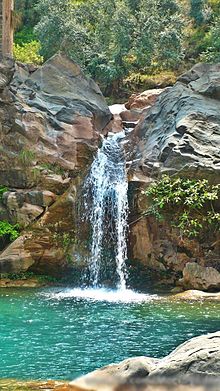안시로스토마티스과
Ancylostomatidae| 안시로스토마티스과 | |
|---|---|
 | |
| 안시로스토마 sp의 알. | |
| 과학적 분류 | |
| 킹덤: | 애니멀리아 |
| 망울: | 네마토다 |
| 클래스: | 크로마도레아목 |
| 순서: | 랍디티다 |
| 슈퍼 패밀리: | 안시로스토마토상과 |
| 패밀리: | 안시로스토마티스과 |
안시로스토마티아과(Ancylostomatae)는 갈고리벌레를 포함하는 벌레의 일종이다.
안시로스토마티스과
습관
후추벌레, 안시로스토마, 네케이터는 장 점막의 플러그를 그들의 부칼 캡슐에 끌어들인다. 조직은 분해되고 혈액이 빠르게 네모드 장으로 퍼져서 대부분 소화되지 않게 된다.[1] [2]
라이프사이클
네케토르 아메리카누스, 안시로스토마 십이지장충은 토양 내에서 1단계 청소년으로 부화하여 감염성 3단계 청소년으로 발전한다. 숙주의 피부를 통한 직접 침투에 의해 감염이 발생한다. 비록 두 종은 다르지만, 둘 다 탈취와 같은 환경적 위험에 취약하다.[3] 이것은 열대지방과 같은 따뜻하고 습한 기후로 그들의 분포를 제한한다. 3단계 청소년은 또한 양과 소를 감염시키는 것을 포함한 삼초스트롱게일 네마토드의 감염 단계다. 알 속의 1단계 청소년과 해열 감염 청소년 모두 해열, 화학물질, 저온에[4][5] 내성이 있으며, 감염성 청소년은 숙주를 감염시키기 전에 몇 달 동안 목초지에서 생존할 수 있다.
컨트롤
후충과 고증에 가장 적절한 통제책은 중환자 개인에게 항암치료를 집중하는 것(과다산증을 이용)과 전염률을 낮추기 위한 위생 개선이다.[6]
참조
- ^ Wharton, David A. (1986). A Functional Biology of Nematodes. Functional Biology. Springer. doi:10.1007/978-1-4615-8516-9. ISBN 978-1-4615-8516-9.
- ^ Seguel, M.; Gottdenker, N. (2017). "The diversity and impact of hookworm infections in wildlife". Int J Parasitol Parasites Wildl. 6 (3): 177–194. doi:10.1016/j.ijppaw.2017.03.007. PMC 5526439. PMID 28765810.
- ^ Hoagland, K.E.; Schad, G.A. (1978). "Necator americanus and Ancylostoma duodenale: Life history parameters and epidemiological implications of two sympatric hookworms of humans". Experimental Parasitology. 44 (1): 36–49. doi:10.1016/0014-4894(78)90078-4. PMID 627275.
- ^ Wharton, D.A. (1982). "The survival of desiccation by the free-living stages of Trichostrongylus colubriformis (Nematoda: Trichostrongylidae)". Parasitology. 84 (3): 455–62. doi:10.1017/s0031182000052756. PMID 7201628.
- ^ Wharton, D.A.; Young, S.R.; Barrett, J. (1984). "Cold tolerance in nematodes". J Comp Physiol B. 154: 73–77. doi:10.1007/BF00683218.
- ^ 와튼 1986

